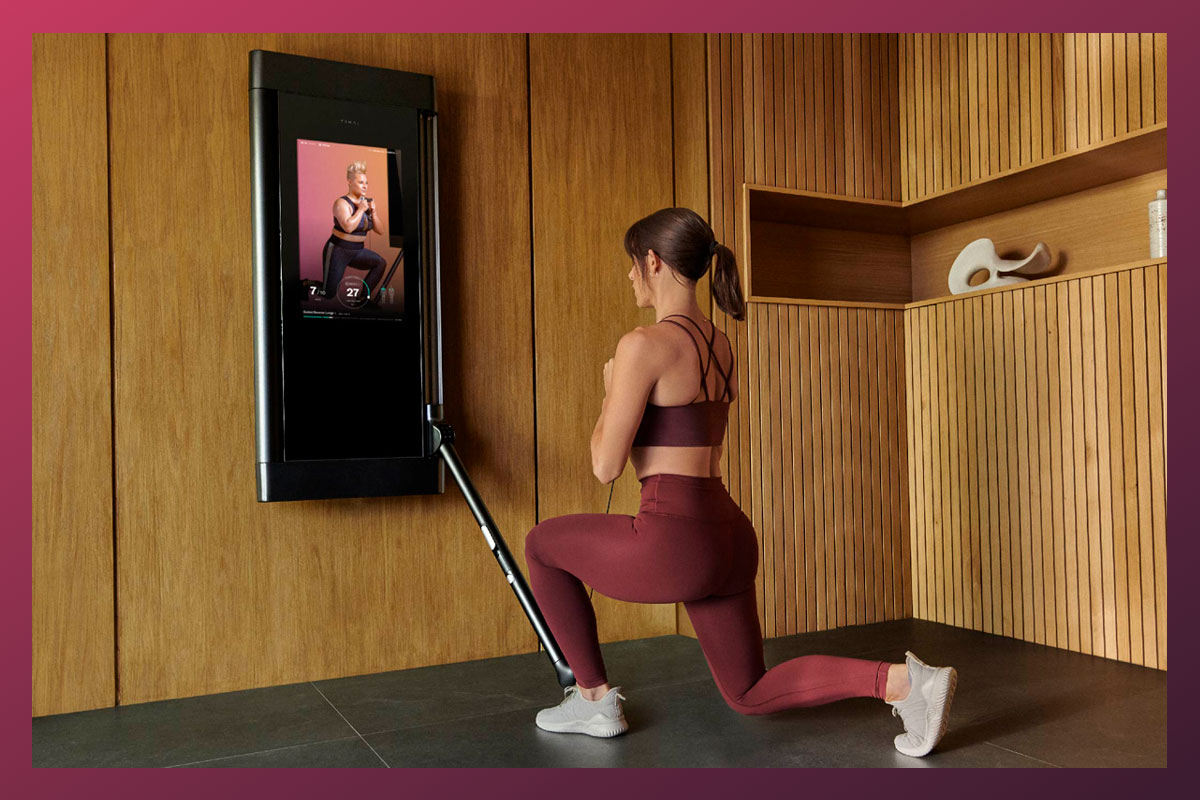Don’t let aching knees, hips, or shoulders stop you from getting stronger.

We’re all constantly bending, twisting, and hinging from our joints, the points where two bones meet such as the ankles, knees, hips, elbows, and shoulders. We use them for all our movements every day, therefore, it’s not surprising that many of us will experience pain in at least one of these areas at some point.
Joint pain can affect anyone. In fact, nearly a quarter of American adults suffer from arthritis (swelling or tenderness of a joint) according to one report from the Centers for Disease Control and Prevention (CDC), with higher rates seen in people over 65 years of age. Even Tonal coach Tanysha Renee, a seasoned personal trainer and experienced runner, suffers from thoracic outlet syndrome, which causes pain in the shoulder and neck joints.
When you have a sore knee or elbow, weight lifting might be the last thing you want to do. However, when performed properly, resistance training can offer some joint pain relief and even prevent further joint pain. Studies have shown that even in older adults with osteoarthritis, strength training is very effective at improving function and reducing pain in the knees and hips.
What Causes Joint Pain?
Locking down the exact cause of your joint pain can be frustrating, since it may stem from multiple factors. It’s best to consult a doctor or physical therapist first to figure out what’s behind your specific pain.
“Joints hurt either when they’re wearing down inside—the articular or hyaline cartilage that lines the surface of the joint starts to wear down [which is called osteoarthritis]—or the forces around the joint are not being distributed evenly, or both,” says Dr. Jordan Metzl, a sports medicine physician and author of The Exercise Cure.
Pain and muscle weakness often go hand-in-hand, with one contributing to the other. “When the muscles around a joint are weak, the joint gets sore. When the joint gets sore, it’s more difficult to build strength,” says Metzl. “It’s an ongoing loop that happens, which is quite difficult for people to break, so they get weaker as they get more sore.”
Metzl explains there’s a similar relationship between pain and limited mobility. “Pain reduces mobility,” he says. “When you’re in pain, you don’t want to move; when you don’t want to move, you move less; when you move less, you get weaker.”
Additionally, doing too much too soon—think: jumping into an aggressive running program if you’ve never run in the past—can also trigger or exacerbate joint pain, says Jenna Moore, a certified strength and conditioning specialist and Fitness Programming Specialist at Tonal, “Gradually introducing any new form of physical activity can hopefully prevent some of that,” she adds.
Is Strength Training Good for Joint Pain Relief?
As with any pain or injury, check with a medical professional first before starting or continuing any exercise routine. In general, though, resistance training has been proven to reduce joint pain by correcting imbalances and weaknesses in the muscles that surround the joint.
Whether the cause of a patient’s joint pain is arthritis or an acute injury like a torn meniscus in the knee, Metzl always incorporates strength training in his recovery plans. He explains that strength training can maintain or improve mobility and reduce pain in the affected joint. Plus, strengthening the surrounding muscles (like the quads for the knees, glutes and hip flexors for the hips, and the rotator cuff for the shoulders) helps joints become stronger and more resilient against pain.
“The joints are hinges, so stronger muscular forces around them are protective,” says Metzl. “Stronger muscles around joints offload [the] joints.” Additionally, Metzl explains that exercise has an anti-inflammatory effect throughout the body, including the joints. His patients are often surprised by how much better they feel after introducing strength training exercises.
Even if you’re not currently experiencing joint pain, strength training should be part of your routine because it may help prevent future pain. Metzl explains that resistance training builds a protective layer around your joints, like scaffolding on a building. That’s why he always recommends strength training to his patients who run marathons or participate in other high-impact activities.
Modifying Strength Training for Joint Pain Relief
Your strength training will look different depending on the cause of your joint pain and the degree to which your mobility is limited. A sports medicine doctor or physical therapist will be best able to prescribe the specific exercises and types of resistance training you should be doing.
Now is not the time to lean into “no pain, no gain” thinking. “What you’re trying to do is work within the pain-free range of motion and then gradually build more functionality as you’re able,” says Metzl. If any pain is changing your mechanical movement patterns, he recommends seeing a medical professional before continuing your training.
“Before you start adding more load to the body, you have to get your range of motion up,” says Renee. “When I increase my range of motion, I’m able to move with a lot less pain.” Moore agrees that it’s best to “lengthen first, then strengthen.” She says, “focus on lengthening, work on flexibility, and then strengthen the joints.”
Lifting too heavy too soon can contribute to pain, so don’t be afraid to dial down the resistance. “Lowering the weight is absolutely an option,” says Moore. “You could just manually lower the weight on one particular exercise or use Tonal’s Recovery Weight mode during particular workouts when you are experiencing joint pain.”
When you have joint pain, spend extra time on your warmup and mobility work so you’ll be ready to lift more comfortably. In an extended warmup “we’re trying to warm up the muscles, drive blood flow [to the muscles], and decrease stiffness or tightness, explains Josh Clay, a certified strength and conditioning specialist. “When you have joint pain, that’s going to take a little longer.”
For best results, Clay recommends incorporating moves in your warmup that specifically prep you for your primary lifts. If you’ll be doing squats in a workout, warming up with moves such as the low-squat walkouts and runners lunge will prime the quads and glutes through dynamic movement.
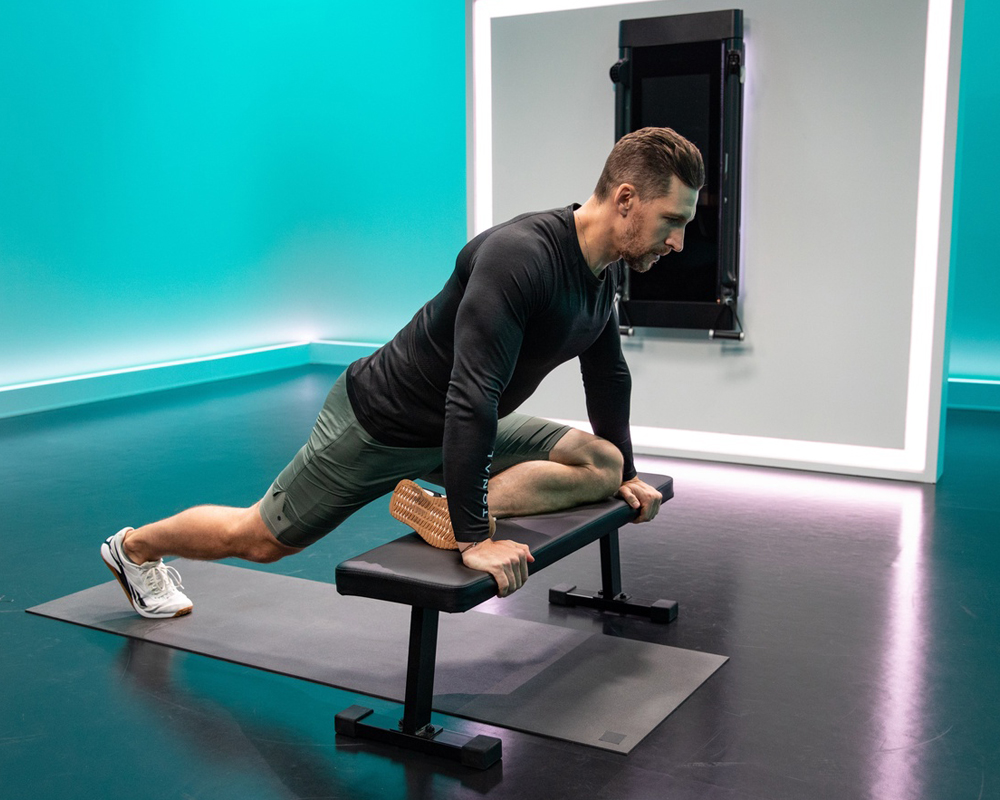
Try This Tonal Workout:
Along with extending your warmup and working with lighter weights, you can also swap out moves for ones that are more comfortable. For example, if pushups hurt your wrists, you can do incline pushups on your knuckles instead to keep your wrists in a neutral position (instead of in extension) and take some of the weight out of your hands and shoulders. Since overhead pressing tends to cause the most stress in the shoulder joints, Clay suggests opting for horizontal pushing exercises instead (like the bench press) or upper-body pulling moves (like rows) to strengthen similar muscles without causing pain. If you have limited ankle mobility, you can perform moves like squats on a heel lift. On Tonal, it’s easy to make these swaps with the movement replacement feature.
If you’re working out on Tonal, Moore says Smart Flex mode can be especially helpful in adapting exercises to reduce pain. “Smart Flex is going to deload the movement where you are mechanically disadvantaged,” she says. “At the point where that joint is typically under the highest amount of stress, Tonal is going to take weight off. And then when that joint is at its strongest point, Tonal will add the weight back on.”
Tonal Program and Workouts for Joint Pain
If you’re looking to target achy joints, Moore recommends these Tonal workouts. “They’re really great about combining flexibility and strengthening in one unit to create mobility at the joint,” she says.
Reps for Relief – Coach Tanysha Renee
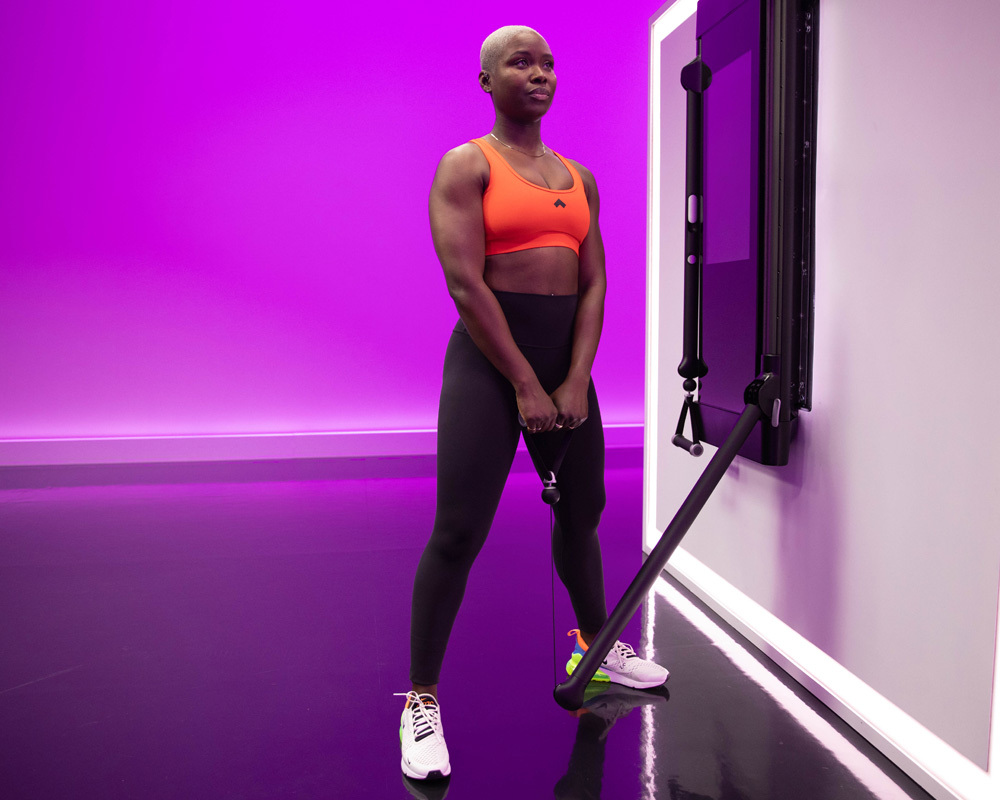
In this four-week program, you’ll focus on the repetition of movements to access your full range of motion and prime your muscles and joints for lifting. All the workouts are low-impact, joint-friendly, and include extended warmups so you can feel strong and confident.
Shoulder Unlock – Coach Kristina Centenari
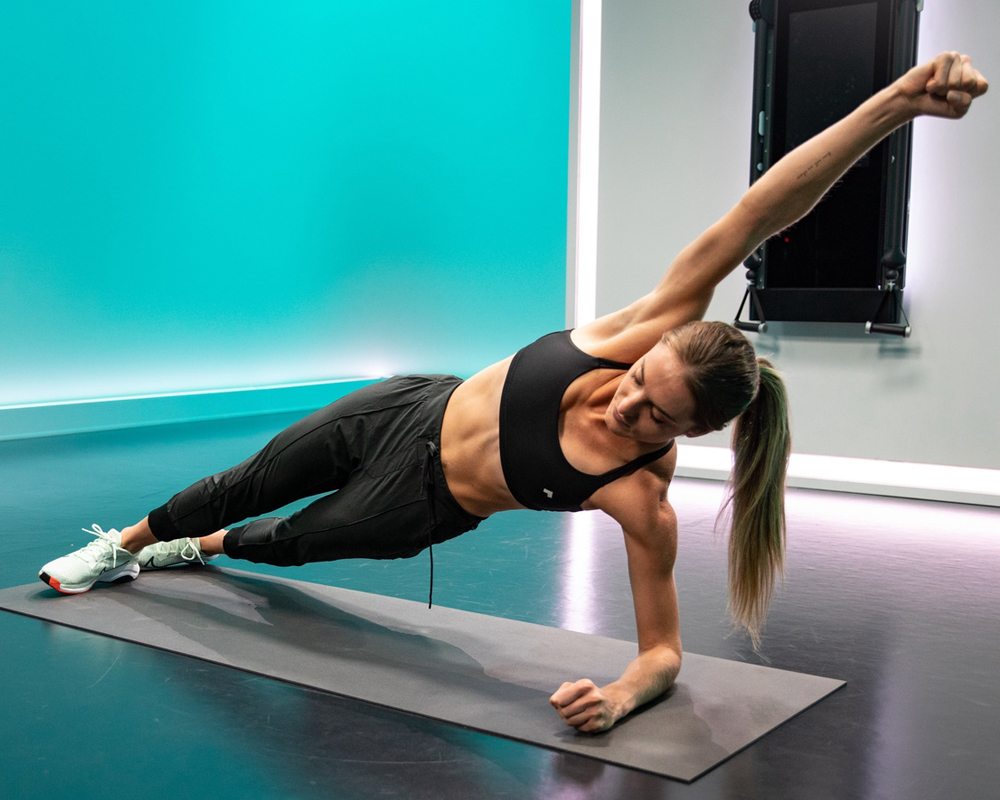
Reduced shoulder mobility is often a limiting factor in upper-body exercises like the overhead press. In this mobility session, you’ll work on opening up the shoulders to move better and prevent injury.
Knee Rehab – Coach Joe Rodonis
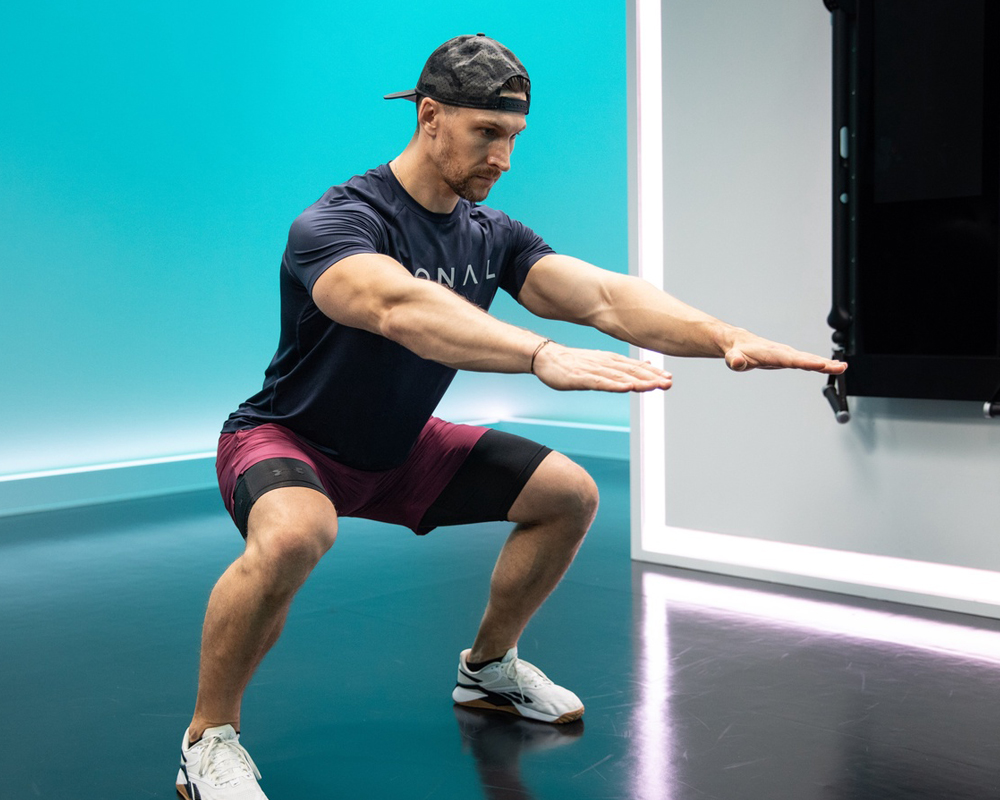
This active recovery workout includes stretches and isometric holds that improve the stability of the knee joint and its surrounding muscles. You’ll lift reduced recovery weights, and Coach Joe will guide you through different modifications for a pain-free session.
Rotational Hip Mobility – Coach Kristina Centenari

Tight hips are no match for this mobility session in which you’ll focus on internal rotation—an important hip function that often gets overlooked in training.
Mobility and Strength Training Exercises for Joint Pain
The following exercises target some of the most common areas where we experience joint pain—the knees, hips, and shoulders. Start with the mobility moves to increase range of motion before adding load in the resistance exercises.
Knees and Hips
90-90 Hip Stretch

Why it Works: Renee calls this move “top tier” for increasing mobility in the hip joints. “It’s great for getting that internal and external rotation on both sides of the hips at the same time,” she says. Since most of us spend hours each day sitting, either at our desks or in our cars, we often have very tight hip flexors which this move helps counteract.
How to Do it: Take a seat on your mat and create 90-degree angles with your front and back knees and hips. Bring your hands to the floor on each side of the front thigh. With a straight back, lean forward slightly opening your chest to your thigh to stretch the glute of the front leg. Slowly rise back up and repeat.
Standing Quad Stretch
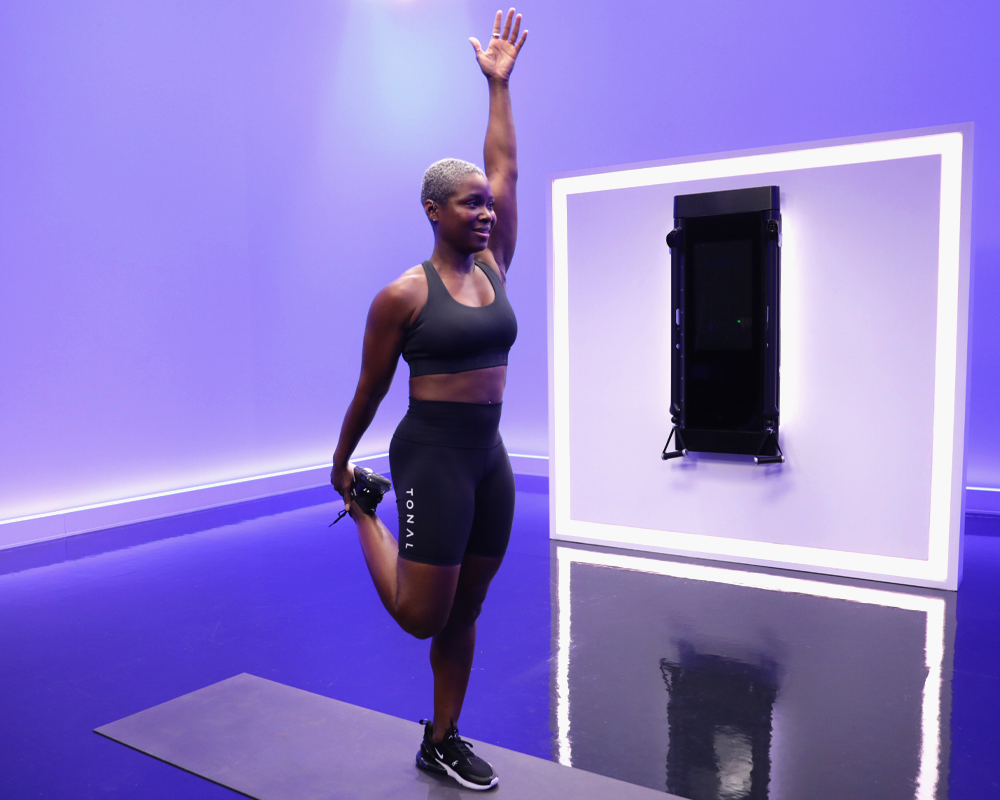
Why it Works: Lengthening the quad muscle in this classic stretch helps take pressure off the knee joint. To maximize the stretch, Renee says to focus on pushing your foot into your hand. “It gives the muscle a little bit more space to expand further once you release the push,” she says.
How to Do it: Standing tall, grab your right foot with your right hand and pull it toward your glutes. Try to keep your knees together as you press your hips forward. Repeat on the other side.
Runners Lunge
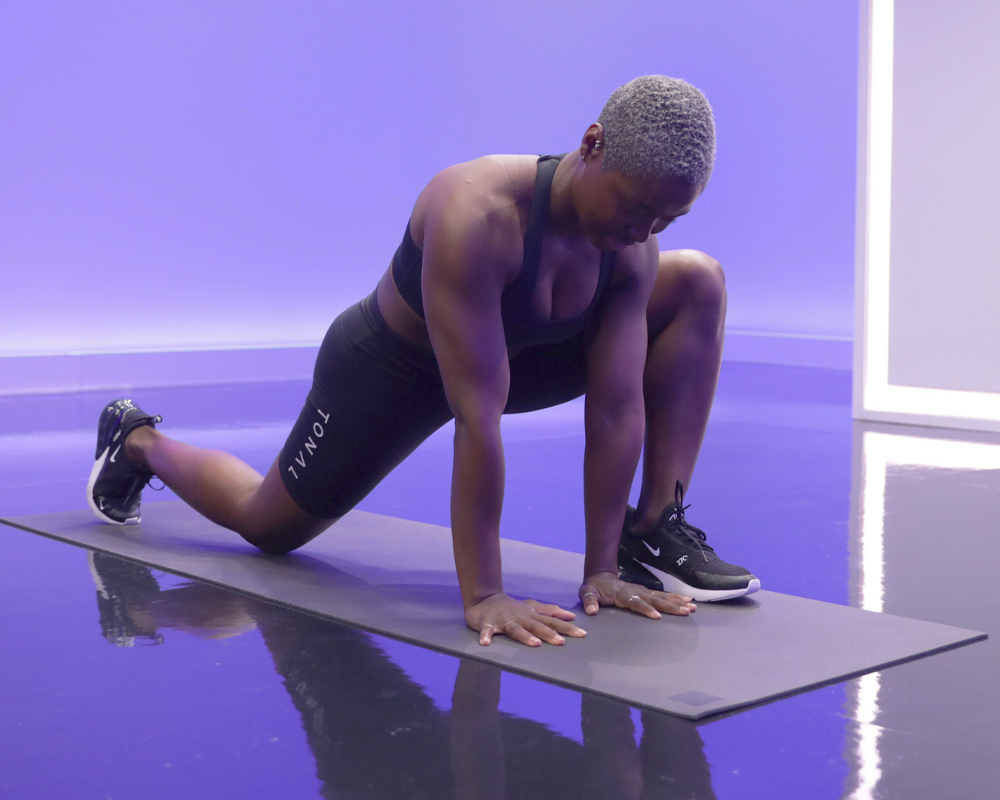
Why it Works: If you’re having trouble finding the full range of motion in a squat, Renee suggests this move for opening up the hips and groin, and encouraging mobility in the knees. If you can’t comfortably get your hands to the floor, rest them on your bench instead.
How to Do it: Get into a low lunge position with your front foot planted and your back leg extended behind you, with your knee on the floor and your toes tucked. Place your hands on the floor inside the front leg, shoulder-width apart. Lift your back knee slowly to straighten your back leg and lift the back of the knee toward the ceiling. Relax your knee back down to the floor and repeat.
Mini Sumo Squat
Why it Works: Renee likes how this squat variation increases mobility through the hips, groin, and knees. “The reduced range of motion allows you to warm up before getting into deeper moves like a full squat,” she says. “Additionally, the wide stance eases stress on the knees.”
How to Do it: Grab the handle and stand tall with one foot on each side of Tonal’s arm. Feet should be slightly wider than shoulder width, toes turned out, and shoulders pulled back. Turn the weight on and then sit back and down into your hips as you drive your knees out to keep them in line with your feet and keep your chest up tall. Stand by driving your feet into the ground and pushing your hips forward as you stand tall.
Shoulders
Thread the Needle
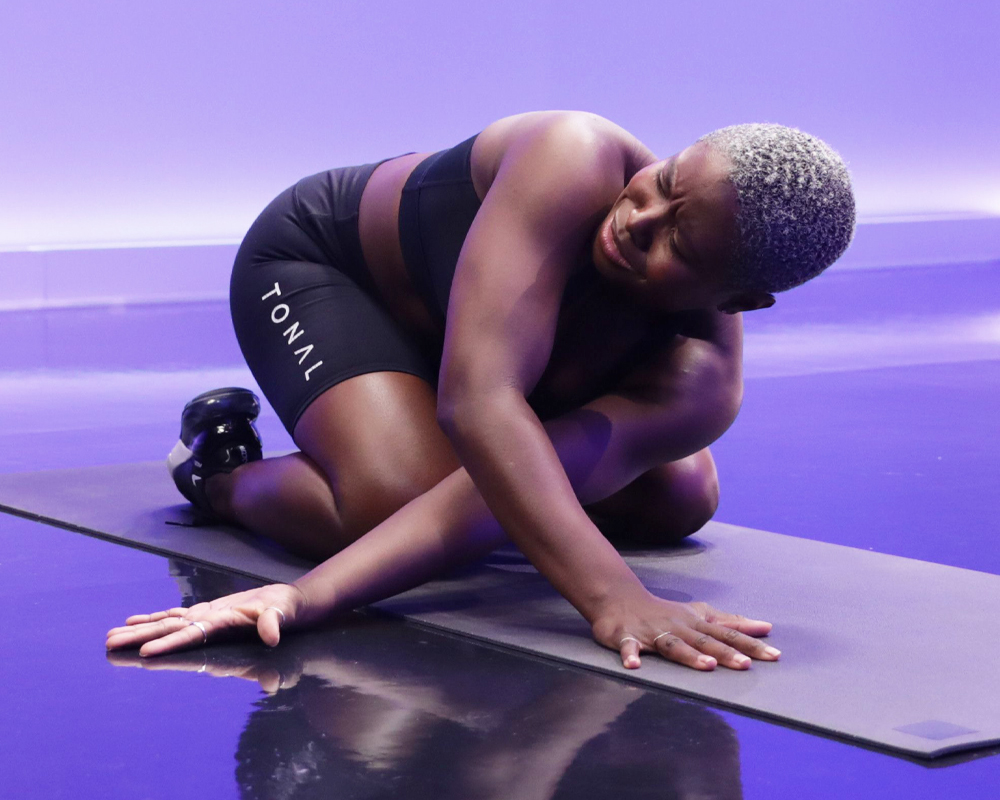
Why it Works: If you’re dealing with shoulder pain, Renee recommends this stretch for opening up the shoulder girdle and stretching out the thoracic spine (or upper back).
How to Do it: Start on your mat on all fours, with your knees under your hips and your hands under your shoulders. Keeping your left hand on the ground for support, reach your right hand under your left shoulder along the mat. Continue reaching your right arm until you feel a stretch, resting the right side of your head on the mat. Repeat on the other side.
Superhero Iso Hold

Why it Works: Along with activating your lats and the backside of your body, this move engages the shoulders, which is why it’s one of Renee’s top picks for shoulder pain.
How to Do it: Lie face down on your mat. Extend your arms upward and out about 45 degrees from your head. Extend your legs about hip distance apart. Imagine strings from the ceiling lifting all four limbs off the floor while you balance on your pelvis and low belly. With your back and glutes engaged, hold here.
Bench Press
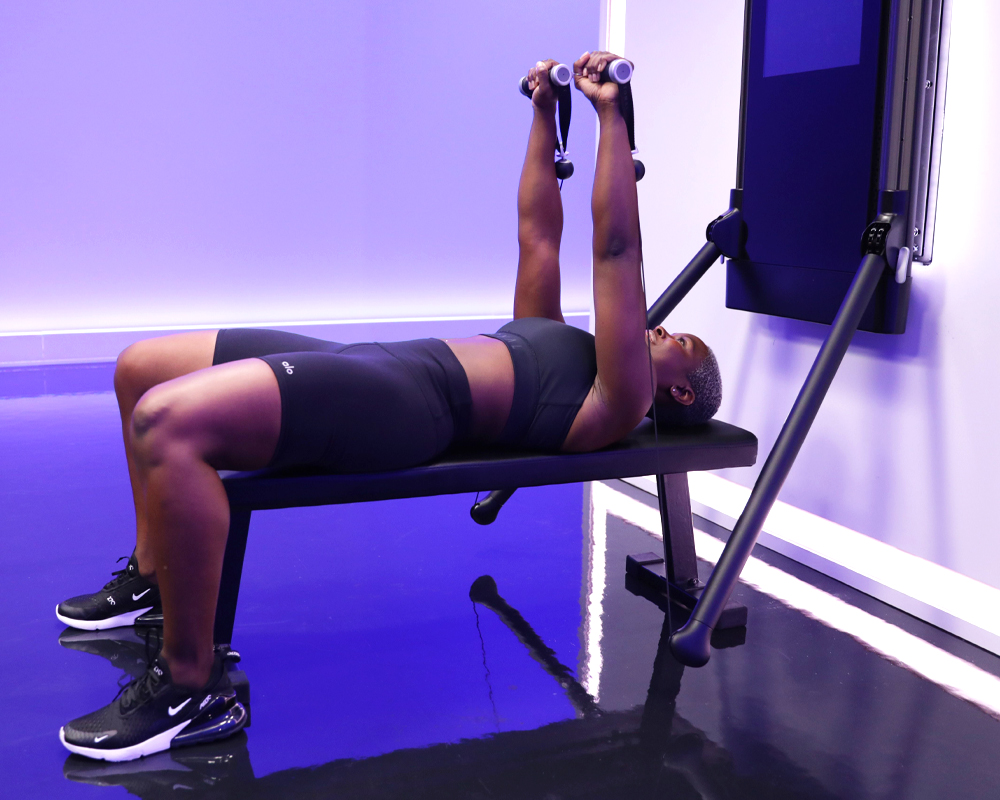
Why it Works: The classic bench press strengthens the shoulders without pressing overhead, which could be painful if you have sore joints. “Use a closer group and keep the elbows inward to place less stress on the shoulders,” says Renee.
How to Do it: Lie on your back on the bench with your head near Tonal. Plant your feet on the floor, chest in line with the end of Tonal’s arms. Grab the handles and bring your arms straight over your chest. Lower down by bending the elbows about 45 degrees from the body with your forearms perpendicular to the floor. Press your knuckles straight up to the ceiling to finish with your hands above your chest.
Internal Shoulder Rotation
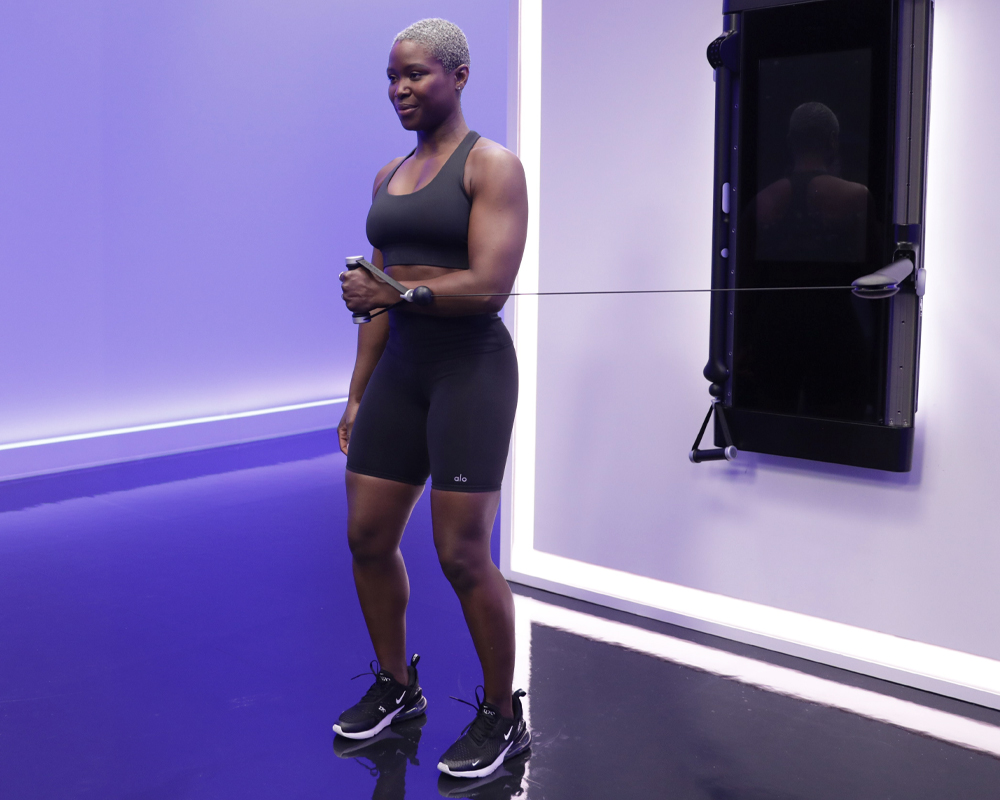
Why it Works: “You can strengthen some of the smaller muscles, the stabilizers, and the connective tissue of the shoulder joint by doing isolation moves,” says Moore. This move isolates the rotator cuff for strong and stable shoulders.
How to Do it: Stand facing Tonal, grasping one of the handles. Lock one elbow by your side at a ninety-degree angle, with your forearm extended forward. Keeping your elbow locked against your side, pull the cable toward your abs by internally rotating the shoulder. Squeeze for a moment and then return to the starting position.
External Shoulder Rotation

Why it Works: Balance out your internal shoulder rotation with this move that targets external rotation. Training for movement in both directions can even out any imbalances.
How to Do it: Stand facing Tonal, grasping one of the handles. Lock one elbow by your side at a ninety-degree angle, with your forearm across your belly. Keeping your elbow locked against your side, pull the cable away from your body by externally rotating the shoulder. Then return to the starting position.
The information provided in this article is for educational and informational purposes only. Individuals with pre-existing health conditions, injuries, or concerns should consult with their healthcare provider before trying a new exercise or nutrition regimen.

